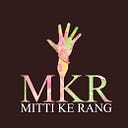Fashion from the trash and wastes: When the circular economy meets the innovation
You take a water bottle wherever you go, carpool with your friends and eat organics which is great but what about sustainability in things that you wear? Have we ever put enough thought into what goes inside your body after you wear it? Vintage and second-hand clothes may be quite a rage. But wearing garments recycled out of plastics and various other sources such as polyester, soda bottles and fishing nets are also in trend these days. And a lot of brands and companies are venturing into the space of making sustainable fashion out of these sources makes it more accessible to people. Quite recently some of the popular celebrities are also seen donning sustainable fashion and endorsing it. Actress and activist Emma Watson recently wore a dress by Calvin Klein which was ethically sourced and reproduced by plastic bottles at a prestigious event in Met Gala making sustainable fashion, and that too fashion out of plastic wastes stand at a global platform.
Thus, when we claim to add green clothing to our wardrobe it not only sustains our economy without even scarring our planet and natural resources; it also promises not to ever compromise on its quality, texture or wearability. Green clothing in our wardrobe reduces the carbon emissions by reducing the air, water, and land pollution. It not only produces sustainable fashion, but also plans to revolutionize the entire production design and manufacture process by obtaining the sustainable materials from bamboo, hemp, and other plastic sources.
We cannot definitely imagine a world without clothes and textile. Clothes express our individuality and self-expression. But the traditional fashion and textile world thrives on the linear model of growth based on the make it–take it and throw it principle. Moreover, the make–take and dispose principle increases the number of wastes that are transported and sent to the landfill, leading to the underutilization of the garments and the lack of recycling. Also, this principle makes a tremendous impact on the socio- environment health of the workers who are associated with both the textile and waste generation and recollection processes. As the materials and the fabric used in the design and the production process are quite hazardous and catastrophic to not only the workers, artisans and the wearers of the garment, but of course to the environment as well, and so as to the citizens.
Thus, re-invention of a system in the textile economy calls for a vision of a circular economy, where the materials, fabrics, and clothes can re-enter the system into better high-end sophisticated products, not necessarily ending up into the wastes is the actual need of the economy. Thus, this economy also tries to build a conscious environment among the consumers and at the same time tries to create green jobs for the economy. But to make the movement successful it needs concerted committed approaches and strategies to be invested with the help of both the local artisan community and the big brands associated with it. It needs the joining hands of both the designers, big brands and artisans to come forward with better ideas of sustainability in the textile economy with the unparalleled amount of commitment, collaboration and innovation to serve the same.
Now, speaking the process of how plastic bottles can be changed into the reusable fabric is actually quite an interesting and fascinating journey of the plastic with the help of technology. At first, the plastic bottles are collected, compressed into bales and then carried to the factories and there these are chipped and crushed into white round balls. These balls are again crushed and spun across a shower like a nozzle that makes viscose yarn. And through these yarns, the fabrics are made and get converted into trendy fashionable garments and products.
Here, I would like to mention some of the top brands that promote the sustainability factor in the fashion industry by recycling and upcycling various wastes of plastics and tires around the world which are as follows:
· Eco alf: Eco alf is a brand which is considered as the pioneer in leading the world towards sustainable and ethical fashion by reproducing the fabric by outsourcing it from the fishermen community. Started in the year 2013 this startup has produced clothes from recycled plastic bottles, fishing nets, polyester, nylon etc. and other oceanic wastes.
· Girlfriend Collective: This is again another upcoming fashion brand that aims to reproduce and promote athleisure for people born out recycled plastic wastes and fishing nets.
· Batoko: This is another British swimwear company that makes its products practically and literally from wastes and plastics.
· La- Vie est Belt: This a brand in France that collects bikes tires and converts the recovered wastes into fashion accessories.
Contributed By- Krittika, Content Writer at Mitti Ke Rang
At Mitti Ke Rang, this Diwali we aim at selling 1 million candles as an initiative to protect lives and livelihood. If you would like to support our women entrepreneurs or thank our front line workers with a gift pack then you can do so by purchasing our Tea Lamps.
You can purchase at
https://mittikerang.myshopify.com/collections/all
You can donate for frontline workers gift pack at:
https://pages.razorpay.com/MittikeRang
Our Social Media:
LinkedIn — https://www.linkedin.com/in/mitti-ke-rang-mkr-81b230120/
Twitter: https://twitter.com/mitikerang?s=08
Instagram: https://www.instagram.com/mitti_ke_rang?r=nametag
Facebook: https://www.facebook.com/Mitikerang/
YouTube:
